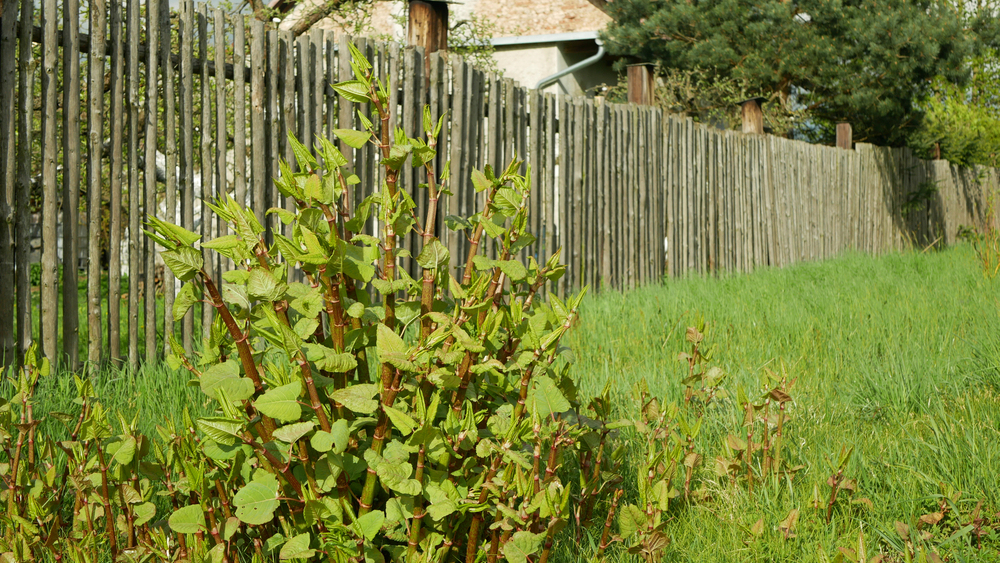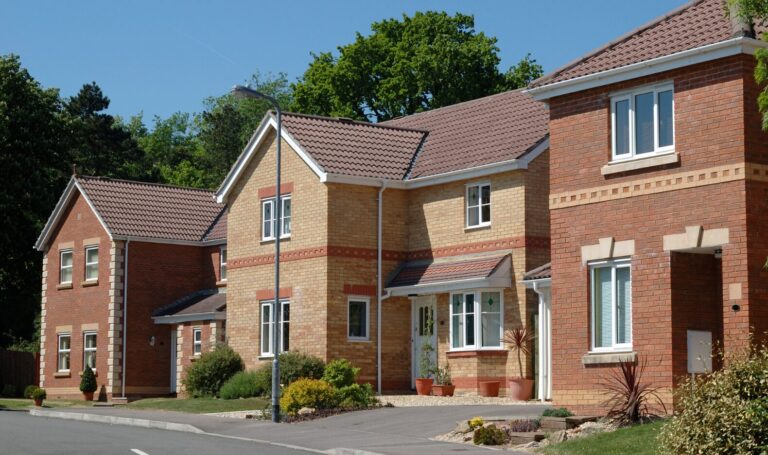Japanese Knotweed can cause major problems for homeowners, landlords, buyers, and sellers.
There are various rules and laws surrounding the plant and guidance for surveyors has been updated.
In this guide, we explain:
- What Japanese Knotweed is and how you can identify it
- Why the plant causes so many problems
- The law and rules surrounding Japanese Knotweed
- How the rules have changed and what you need to know
- How to remove Japanese Knotweed and how much it costs
What is Japanese Knotweed and how does it spread?
Japanese Knotweed is a highly invasive plant that has spread rapidly across the UK since being brought into the country from the Far East in the 19th century.
While Japanese Knotweed favours wet areas close to canals and rivers, it can also take hold in gardens and can cause damage to property and outbuildings.
The plant spreads rapidly by growing underground stems called rhizomes and new plants can grow in just 10 days from even a small piece of rhizome no bigger than a five pence coin.
During the summer, Japanese Knotweed grows up to 10cm a day and even a piece of plant that has been ripped from the ground may grow again if it comes into contact with soil and water.
Identifying Japanese Knotweed
Japanese Knotweed can be tricky to identify, but you should look out for:
- Red buds that emerge in spring
- Shoots and stems that are green with purple spots and resemble asparagus sticks
- Large, shovel shaped leaves that turn from brown to rich green in summer alongside small white flowers in autumn
Plants sometimes mistaken for Japanese Knotweed include Lilac, Bindweed, Bamboo and Russian vine.
Why is Japanese Knotweed bad?
Because Japanese Knotweed grows so quickly and can regrow from tiny pieces of rhizome, it’s extremely difficult to eradicate.
The plant can grow through small gaps in concrete and cause damage to cavity walls, drains, pavements, and patios.
Outbuildings are more commonly directly affected by Japanese Knotweed, but it can also exploit weaknesses in properties, causing structural damage and, in the worst cases, subsidence.
It’s estimated that around 5% of UK homes are affected by Japanese Knotweed – around 1.5 million properties in total.
The law and selling a house with Japanese Knotweed
By law, sellers
and estate agents must inform potential buyers if a property and its land are affected by Japanese Knotweed.
There is a question related to Japanese Knotweed on the TA6 property information form and this must be filled in honestly and correctly by a seller.
While it’s not against the law to have Japanese Knotweed present on your land, is it against the law to allow it to spread into the wild or neighbouring properties.
Other laws on Japanese Knotweed state:
- The plant is controlled waste and must be disposed of correctly at a licensed landfill site
- Soil or material containing Knotweed rhizomes is also controlled waste
- To transport Japanese Knotweed or infected soil, you must have a waste carrier’s licence
How much does Japanese Knotweed devalue a house?
Research estimates Japanese Knotweed can devalue a property by up to £23,000.
In the very worst cases, Japanese Knotweed can make a property almost un-sellable, as it sometimes affects a buyer’s ability to get a mortgage.
Should I buy a house with Japanese Knotweed?
Buying a property
with an infestation of Japanese Knotweed can be complicated.
If you’re considering buying a property where Japanese Knotweed is present, you should assess the situation with the expert advice of a surveyor.
New rules on Japanese Knotweed and property
Under previous Royal Institute of Chartered Surveyors (RICS) guidance, a property was said to be affected by Japanese Knotweed if the plant was found on neighbouring land within seven metres of the property’s boundary.
However, new guidance in place from March 2022 has reduced this to three metres, after new research suggested this was the maximum distance a Japanese Knotweed rhizome could spread.
Surveyors are now encouraged to consider the potential damage Japanese Knotweed could cause to amenities such as sheds, garages, conservatories, or useable garden spaces rather than simply applying the previous seven-metre rule.
RICS has also replaced its risk assessment categories with three ‘Knotweed management categories’ when assessing the impact of the plant on property:
1. Category A
Japanese Knotweed is present and causing visible damage to a significant structure, which is likely to affect value because repair and remediation costs will be incurred.
2. Category B
There is no material damage to structures, but Japanese Knotweed is present and likely to prevent the use of or restrict access to an amenity space. This may affect value but only remedial costs will be incurred rather than structural repair costs.
3. Category C
Japanese Knotweed is present but isn’t causing damage or affecting an amenity space. The impact on value is lower as structures and amenity spaces have not been affected and remedial costs are at the owner’s discretion.
‘’Now the seven-metre rule has been reduced to three metres, it focusses more on the enjoyment of your garden than the actual property damage risk,” says Rob Smith, Managing Director of CJ Hole.
“It is best to ensure your surveyor is checking for this when they visit and always seek professional help where Japanese Knotweed is concerned instead of attempting to tackle this yourself.
“While you can still sell your home if it is affected, it could significantly reduce the sell price.”
Will Japanese Knotweed stop me getting a mortgage?
Mortgage lenders may be unwilling to lend on properties with an active Japanese Knotweed infestation, or they may insist that a treatment plan is put in place by an approved contractor alongside a guarantee once that treatment is completed.
However, now surveyors are assessing Japanese Knotweed based on it being within three metres of a property boundary rather than seven metres, more properties are likely to fall outside of new guidance.
Using the Royal Institute of Chartered Surveyors’ (RICS) three Knotweed management categories:
- Properties falling under categories A or B would be expected to see mortgage lender retentions pending specialist reports on the problem
- Properties falling under category C would be expected to see no mortgage lender retention as the problem isn’t directly affecting structures or amenities
- Properties where Knotweed is present on other land but within three metres from a boundary would be expected to see no mortgage lender retention
- Properties where Knotweed is present on other land but more than three metres from a boundary should not be categorised or reported to lenders
How to get rid of Japanese Knotweed
Japanese Knotweed requires either specialist herbicide treatment or excavation to get rid of it.
Glyphosate herbicides are most commonly used by experts, but severe Knotweed infestations often require two or even three years of treatment to complete eradicate them.
Professional excavation of Japanese Knotweed is also available, but you should ensure any company you use is licensed to dispose of Knotweed waste legally.
Mowing or strimming Japanese Knotweed can cause it to spread, while cutting the plant out of the ground yourself often has little effect due to its large underground network of rhizomes.
These rhizomes can sit up to seven metres deep, and any that remain will produce new plants in the future.
How much does Japanese Knotweed removal cost?
The average cost for a Japanese Knotweed herbicide treatment is £1,750, while a full excavation and disposal costs £6,500 on average.





